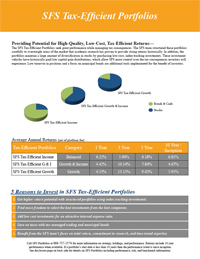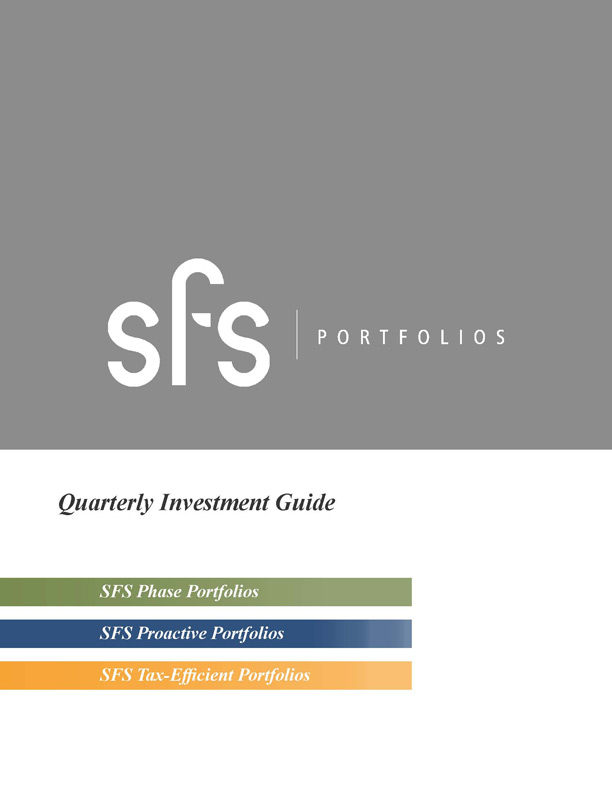SFS Tax-Efficient Portfolios

SFS Tax-Efficient Portfolios have a goal to maximize after-tax returns. This is accomplished by keeping turnover low in passive investment vehicles that rarely make capital gains distributions. This leaves the advisor and client with more control over triggering taxable events. These portfolios are also designed to help keep investment costs low.
View the Full Brochure >
SFS Tax-Efficient Income The SFS Tax-Efficient Income seeks conservative investment of principal and tax efficiency. The portfolio allocates up to 25% of its assets in stocks and 75% in bonds. To minimize taxes, the portfolio focuses on opportunities in municipal bonds and implements a long-term investment strategy for stocks. Learn More >
SFS Tax-Efficient Growth & Income The SFS Tax-Efficient Growth & Income is designed for investors interested in long-term growth, strong diversification, low taxes, and low expenses. The portfolio implements a passive strategy with 60% exposure to a well-diversified selection of equities and 40% to fixed-income holdings. The allocation within these areas focuses on factors that have been academically tested and proven to reward investors. This portfolio's tax efficiency is derived through its low turnover, its municipal bonds, and its use of ETFs. ETFs rarely pay capital gains distributions as each account invested will have its own cost basis. Learn More >
SFS Tax-Efficient Growth The SFS Tax-Efficient Growth is designed for investors interested in long-term growth, strong diversification, low taxes, and low internal expenses. The portfolio implements a passive strategy with 80% exposure to a well-diversified selection of stocks and 20% to conservative bond holdings. The allocation within these areas focuses on factors that have been academically tested and proven to reward investors. This portfolio's tax efficiency is derived through its low turnover, its municipal bonds, and its use of ETFs. ETFs rarely have capital gains distributions as each account invested will have its own cost basis. Learn More >
